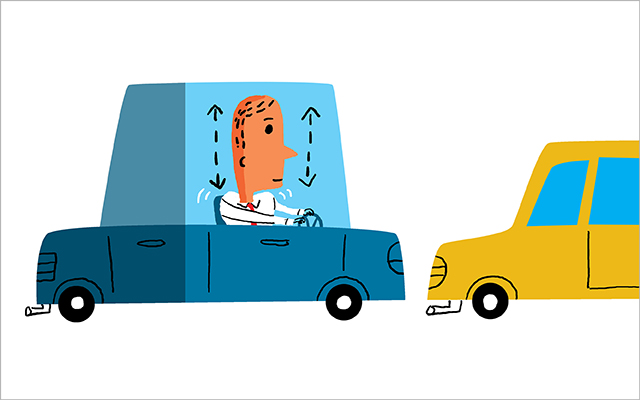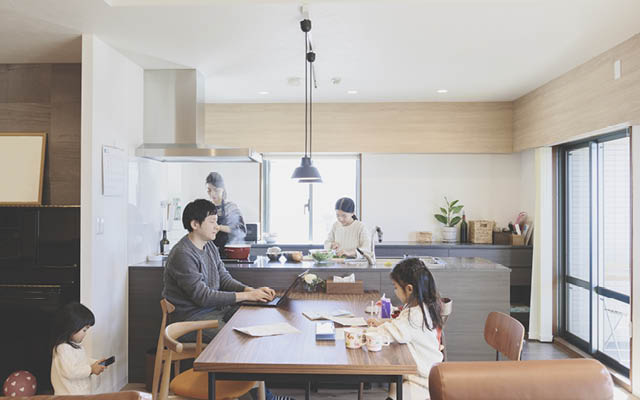During her workday, Angela Hult is a dynamo. As assistant director of strategic communications for an Oregon-based healthcare company, Hult tackles nonstop cell-phone calls from reporters, community members and company employees. She responds to dozens of daily emails between strategy meetings. She often eats lunch late or while she’s reviewing paperwork. Colleagues frequently hear the background clicking of Hult’s computer keyboard – she’s answering “just one quick email” – while they’re talking with her on the phone.
For better or worse, Hult is a master multitasker. Until 6 p.m., that is. At the end of the day, Hult is just as strategic and determined about leaving work behind.
When the clock strikes six, she diligently logs off her computer and leaves her office. She’ll often avoid rush-hour traffic by stopping in for a stress-busting kickboxing class at her company’s on-site gym.
Once she’s in her car, she eschews news and talk radio and instead plays relaxing music CDs. This helps her transform a potentially stressful half-hour commute into a key decompression time, one that helps her prepare – mentally, emotionally and energetically – to return home to her husband and 6-year-old son.
Seeking the Oasis
“Once I’m home, I’m all about being home,” says Hult. “I’m very stubborn about keeping my work and family life separate. I don’t take home my laptop, I don’t own a Palm Pilot and I rarely do office work once I walk through the door of my house.”
Hult does a good job of maintaining what many American workers have almost completely lost: clear boundaries between work and home. “A lot of us don’t realize that transitioning from one part of life to another takes energy,” explains Cheryl Richardson, life coach and author of Take Time for Your Life. “Work and home require vastly different kinds of energy, and that transition takes a bit of time. Our brain has to stop and shift gears into a new mode.”
According to Richardson, many of us spend so much time working on computers that we unconsciously try to function like them, switching from one part of our lives to another as quickly as we would shift between two tasks on a split screen. “The problem is that very few people can switch real-life roles in a nanosecond, and it’s not to our advantage to do so,” she says. “Our nervous systems just don’t work that way.”
New York–based clinical psychologist Peter Fraenkel agrees. As director of the Center for Time, Work and the Family at the Ackerman Institute for the Family in New York, Fraenkel regularly counsels frazzled individuals and families. He says that for working adults, the time between the end of the workday and the return home can be one of the most stressful points in their entire daily schedule.
“Many working folks leave their long, hectic workday and immediately are faced with needy children, housework and bills,” Fraenkel points out. “In families with children, particularly, the day is not really over until both parents totally collapse in exhaustion.”
Finding a New Time Zone
If feeling frenetic and overloaded isn’t enough to convince you that you need to create a small oasis of time at the end of your workday, consider the time wasters – and even safety consequences – involved in hurrying home without a break.
Karen Yasgoor, an industrial and organizational psychologist based in La Jolla, Calif., often asks her clients, “How many times have you lost your keys after work because you were in a rush? Tripped on the way to your car? Ignored a stop sign during your evening commute because you were on your cell phone? If any of these things happen, it’s because you’re thinking faster than your body. It’s time to slow down.”
The answer, say many experts, is to create a clear-cut “transition zone” at the end of your day. Give it a definite starting time, such as 5 or 6 p.m., when you will leave work – no matter what. Then define the activities that will best help you mentally disengage from your job.
Yasgoor, for instance, frequently pulls out of California rush-hour traffic to stop for a cappuccino or yogurt. She takes the time to read a book or chat with a fellow traffic escapee. “It doesn’t have to be a long time,” she says. “Even 15 minutes is enough to help me let go of my workday.”
How to Mindfully Come Home from Work
“The time between work and home is a great opportunity to practice moving from one way of being to another – from a hectic, exhausted person to your calm, most creative self,” says Richardson.
If you’re not loving the frazzled, crabby person you are when you arrive home, maybe you need some help with your mood-modulating technique.
Here are some strategies to help you create your own transition zone after work:
Create a “Leaving Work” Routine: If you tend to work frantically until the second you leave the office, reconsider your rhythm, say our experts. If necessary, set your computer calendar or an alarm clock to remind you to wind down 15 minutes before the end of the day.
Raeleen D’Agostino Mautner, a clinical psychologist and author of Living La Dolce Vita: Bring the Passion, Laughter and Serenity of Italy into Your Daily Life, suggests using this period to do “closing up shop” tasks, such as backing up your computer files, tidying your desk and writing down your to-do list for the following day. By noting next-day tasks, says Mautner, you free yourself from carrying those items in your mind all evening.
Reconsider Your Commute: Life coach Cheryl Richardson always asks clients to consider cutting back on drive time, particularly if their commute takes an hour or more. This can be a tall order, since it may mean moving or changing jobs, but she believes it’s worth it. “The physical stress of being in traffic isn’t good for anyone,” she says. “Besides, think of how many hours of your life you are wasting just sitting in your car.”
Listen Up: If you’re comfortable with your commute, consider how you can make the time more pleasant and transformative. Richardson suggests you think carefully about what you listen to on the way home. “Provocative news and talk radio can be interesting, but is it calming?” she asks. “If not, consider listening to classical or another type of calming music you enjoy.” Additional options include comedy monologues, yoga philosophy and other teachings available on CD.
Give Your Body What It’s Missing: If you sit at a computer all day, a brisk walk or exercise class after work can help you restore energy and shift gears, says Mautner.
Alternatively, if you have a physically demanding day job, a relaxing yoga class or half an hour at a tea shop can help you settle down for the evening.
Get Some Air: Basic breathing exercises offer a fast and surprisingly effective way to renew yourself for the evening ahead. This deceptively simple technique helps reset your parasympathetic nervous system, which is responsible for helping you get calm and centered:
- Inhale through your nose for four counts.
- Exhale through your mouth for eight counts.
- Make sure you’re inflating your lower abdomen when you breathe.
- Repeat four or five times, then breathe normally.
Another idea: Park your car 10 minutes away from your office building so that you’re guaranteed a brief walk after work, or take a quick stroll around the block. Use this time to practice full-belly breathing.
Make a Quick Stop: Scout out a good location (maybe a city park, an overlook or a quiet residential street) where you can stop the car for even three minutes on your way home.
Visualize how you want your homecoming to be. Picture the faces of your family members or partner and let yourself well up with love for them. Or just take stock of the day and count your blessings. Don’t start the car until you’re feeling really ready to walk in the front door.
Couples: Respect Your Differences. Fraenkel notes that the weeknight hours of 5 p.m. to 9 p.m. are “highly flammable” for couples who have different ways of decompressing and aren’t clear with each other about their needs.
“One partner might need a little quiet time before launching into the activities of couplehood and family life,” explains Fraenkel. “Meanwhile, the other partner might want to dive into activities with kids and immediately start a conversation with her partner about her day.”
The two approaches clash, he notes, not necessarily because the partners want different things, but because they want them in a different order. Fraenkel suggests couples brainstorm about what would best help them both relax after work. Perhaps they can take turns having quiet time, or decide to walk the dog together.
For Singles: Make a Commitment. Avoid the temptation to make work your life just because you don’t have a partner or family waiting for you at home.
Have a standing date with a friend at the gym. Sign up for a class doing something you love. It’s less tempting to work late if you have an appointment you’d hate to miss. Plus, scheduling time for your personal life helps ensure that you do, in fact, have one!
How to Transition from the Home Office
A five-step commute has plenty of advantages, but it has downsides, too. Work-at-homers can have an especially hard time setting boundaries and transitions between their home and work lives. Here are some pointers:
- Close down your workspace. A home office with a door is ideal, but if you don’t have that option, consider instituting a desk-clearing ritual that helps you say: “My work is done. I’ll start again tomorrow.”
- Turn off your computer. Remember the days before high-speed Internet access? We actually used to turn off our computers for the day. Do this and you’ll be far less tempted to “just peek” at your work email.
- Do a “Fred Rogers.” On his kids’ TV show, Mr. Rogers switched from jacket and dress shoes to sweater and sneakers, and you can do the same. Change into “play clothes” to signal to yourself that work is over. If you work in your pajamas, shower and get dressed when you quit work. Or choose some other comforting ritual that says your work day is done.
This article originally appeared as “Making the Transition” in the March 2005 issue of Experience Life.




This Post Has 0 Comments